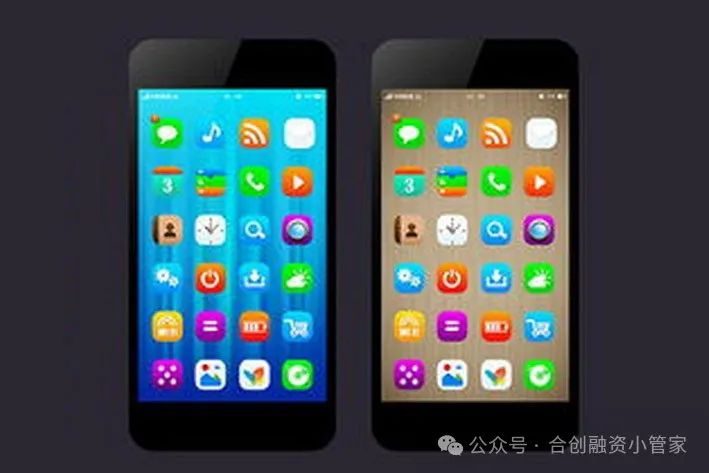Building a Social Platform with C++: Unlocking the Fantastic Journey of Basic Features
1. Introduction: A New Era of Socialization, Led by C++

In today’s digital wave, social platforms have become an indispensable part of people’s lives. From daily communication with friends, sharing life’s moments, to expanding networks and engaging in business collaborations, social platforms cater to diverse needs. Statistics show that billions of people globally are active on various social platforms daily, with giants like Facebook and WeChat boasting huge user bases, highlighting their significant status.
So, how can we create a powerful and smooth social platform? The C++ programming language stands out. With its efficient performance, strong low-level control capabilities, and rich library and framework support, C++ injects robust power into social platform development. Next, let’s explore the magical power that C++ brings to social platforms.
2. First Impressions of C++ in Developing Social Platforms

A social platform, in simple terms, is a place based on internet technology that allows users to interact, communicate, and share information and resources in a virtual space. It breaks the limitations of geography and time; no matter where you are, as long as you are connected to the internet, you can communicate with people around the world at any time. From instant messaging apps like WeChat and QQ to social networking services like Facebook and Weibo, and to platforms focused on specific fields like LinkedIn and Zhihu, different types of social platforms meet diverse needs.
What key role does C++ play in this? As a high-performance programming language, C++ combines the efficiency of C with object-oriented features. Its compiled language characteristic allows code to be directly converted into machine code for execution without any additional interpretation, resulting in extremely high execution efficiency. For example, in handling large-scale user data, C++ can respond quickly, ensuring smooth operations for loading massive friend lists and pushing dynamic information, minimizing lag and providing users with a seamless experience. Moreover, C++ allows for precise control of system resources, allocating memory efficiently to avoid resource wastage, ensuring stable platform operation, even when faced with high concurrency scenarios, such as massive user interactions triggered by trending topics.
3. Core Features Unveiled

3.1 User Management: The Foundation’s Stability
User management is the cornerstone of a social platform. In terms of registration, utilizing C++’s powerful form processing and data validation capabilities ensures that user input is accurate and compliant. For instance, password strength requirements can be verified using regular expressions to ensure account security. During the login process, encryption algorithms such as MD5 and SHA-256 can be used to encrypt passwords during transmission, preventing plaintext exposure, with server-side decryption and verification, combined with a CAPTCHA mechanism to effectively resist brute force attacks.
In terms of information management, users can modify their nicknames, avatars, and personal signatures at any time. C++ interacts with the database to quickly update user table data, such as real-time changes to social platform avatars, where C++ accurately locates the file path storing the avatar and updates the database record, creating a personalized display space for users.
3.2 Building Social Connections: Connecting You and Me
The add friend feature is the starting point of social interaction. Based on C++ network communication, when sending a friend request, the data packet carries information about the requester and the requested party, which the server receives and processes, storing it in the friend relationship table, and the requested party receives a notification to respond in a timely manner. For group management, C++ manipulates the database to create and edit groups, achieving clear categorization of friends, such as work partners, family, classmates, etc.
The relationship display is equally exciting. On the social page, C++ retrieves the friend list and group information from the database, presenting it visually in formats such as lists and grids using graphical interface libraries (like Qt), allowing users to see complex social networks at a glance.
3.3 Message Interaction: Communication Without Borders
The private messaging feature leverages C++’s socket programming and multithreading technology to achieve real-time one-on-one communication. When sending a message, C++ encapsulates the text and sends it to the other party via socket, with multithreading ensuring that message reception does not block, popping up new message notifications at any time, just like real-time messaging in WeChat.
Group chats are even more lively. When creating a group chat, C++ creates a group data structure on the server, dynamically updating members joining or leaving. Messages are sent in bulk to each member’s client, combined with instant messaging frameworks (like Boost.Asio), ensuring timely and orderly delivery of messages in large group chats, such as continuous discussions in work groups or interest groups.
Message notifications are also up to date. System notifications, friend requests, and other important messages utilize C++’s push technology to flash reminders in the application background or system tray, ensuring users do not miss key interactions, maintaining close social connections.
3.4 Dynamic Sharing: Enjoying the Exciting Moments Together
When posting updates, C++ supports image, text, and video uploads. It utilizes multimedia processing libraries to compress images and transcode videos, optimizing file sizes, along with rich text editing, providing users with diverse creative tools to perfectly present exciting moments in life.
The like and comment features add interactive fun. At the moment of liking, C++ triggers a database update for the like count, providing real-time feedback on popularity; during commenting, the input text is submitted to the server for storage and then retrieved for display, facilitating the exchange of ideas, similar to the lively interactions under Weibo or Moments, all efficiently supported by C++.
4. Practical Case Analysis

Taking a simple social platform as an example, here is some key code. The user registration module uses C++ to connect to a MySQL database:
#include <mysql mysql.h="">
#include <iostream>
#include <string>
MYSQL* connectToDatabase() {
MYSQL* conn = mysql_init(NULL);
if (conn == NULL) {
std::cerr << "mysql_init() failed" << std::endl;
return NULL;
}
conn = mysql_real_connect(conn, "localhost", "root", "password", "social_platform", 0, NULL, 0);
if (conn == NULL) {
std::cerr << "mysql_real_connect() failed: " << mysql_error(conn) << std::endl;
return NULL;
}
return conn;
}
void registerUser(MYSQL* conn, const std::string& username, const std::string& password) {
std::string query = "INSERT INTO users (username, password) VALUES ('" + username + "', '" + password + "')";
if (mysql_query(conn, query.c_str())) {
std::cerr << "mysql_query() failed: " << mysql_error(conn) << std::endl;
}
}
int main() {
MYSQL* conn = connectToDatabase();
if (conn != NULL) {
std::string username = "new_user";
std::string password = "secure_password";
registerUser(conn, username, password);
mysql_close(conn);
}
return 0;
}</string></iostream></mysql>The above code first initializes the MySQL connection; if successful, it inserts the new user information into the “users” table. Here, C++ cleverly utilizes string processing to construct SQL queries for database interaction.
In building social connections, assume we use an adjacency list to represent friend relationships, defining a structure:
#include <vector>
#include <string>
struct User {
std::string name;
std::vector<user*> friends;
};
void addFriend(User* user1, User* user2) {
user1->friends.push_back(user2);
user2->friends.push_back(user1);
}</user*></string></vector>Through simple structures and functions, we simulate the add friend operation. When “user1” adds “user2” as a friend, it adds both ways, accurately reflecting the social relationship.
The development process includes many practical tips. For example, optimizing database operations using connection pool technology, creating a certain number of database connections in advance to avoid frequent creation and destruction, thus improving efficiency. In multithreaded message processing, using thread pools to manage threads, limiting the number of threads to prevent resource exhaustion, ensuring system stability. Additionally, code modularization is crucial, encapsulating different functionalities into independent modules, such as user management modules and messaging modules, reducing coupling, enhancing maintainability and scalability, making subsequent iterations and upgrades more convenient.